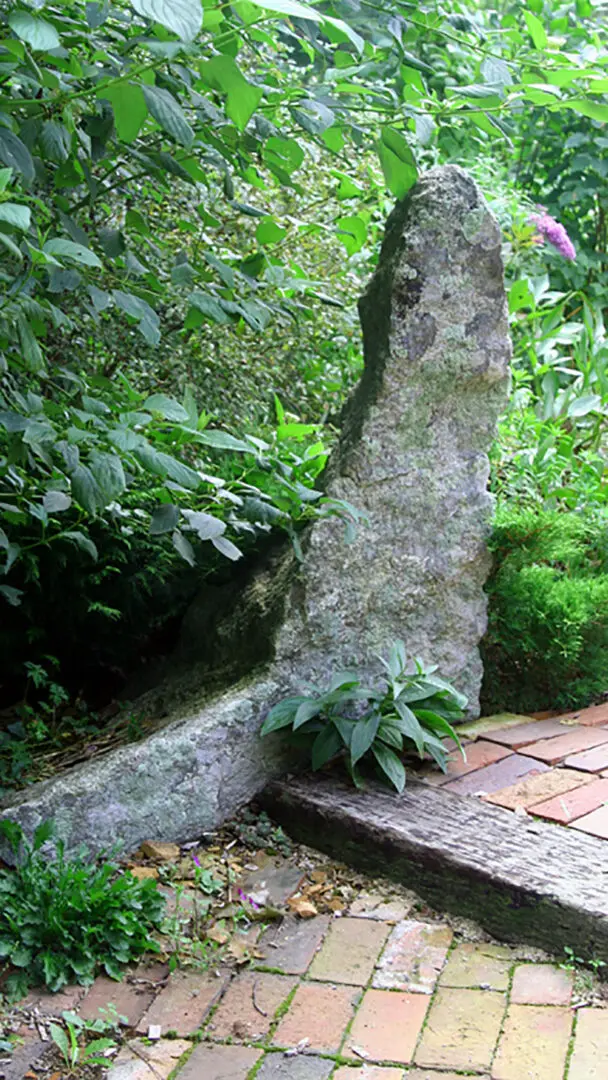ROCKS & HARDSCAPES
Hardscapes, whether large or small, usually become the major components of most landscapes but are often ignored. They include everything non-organic such as rocks, fences, driveways, paths, benches, buildings, ponds – anything which does not grow and can be seen, more or less, during the winter season. Hardscapes usually emerge as the backbone of their respective spaces and, therefore, become major parameters to which all other features relatively pay visual homage as seasons change. They commonly incorporate soft sculptures such as trees, colorful shrubs, and/or ornamental grasses, but still remain major focal points within their respective vistas.
John’s father built stone walls as a hobby, and thus exposed John to the intricacies of stone construction during John’s early childhood in the northeast. If alive today, John’s father would enjoy both the efficiency of John’s equipment and possibly how he deliberately tugs at the orderliness of perimeters/borders (such as “coloring” outside the prescribed lines). Whereas John’s father believed in orderliness and control, John shies away from the concept of single, direct control but carefully acknowledges the balance of different control sources. [Do not the differences between generations become rich and colorful?]
Tools and machinery for John’s hard sculpting include almost everything from his excavator, moving material with his tractor, trailers, and trucks to his shop tools stored in his mobile tool shed. John deliberately restricts the size and weight of his machinery to be transported by his 1-ton truck so that he can maintain a more inexpensive and “smaller footprint.” If anything larger is needed, John either rents or subcontracts the precise equipment.
Because hard sculptures develop into the “backbones” of landscapes, John searches for clues of dimensions, directions, and context (material to be used) from the actual landscape and from his clients’ images. Solitary organic structures (trees, shrubs, and plants), depending on their seasonal performances, often can augment hard sculptures. Hard sculptures hopefully never violate or overwhelm the scene in which they supposedly support. Otherwise, given time and gravity, they, too, eventually will be eliminated if given the lack of emotional identity and involvement from the owners/stewards.
Hard sculptures are often installed prior to soft materials (organic flora). Planning and choosing the direction of every landscape can be frustrating when one cannot see the end results but become very rewarding as one’s project progresses.

